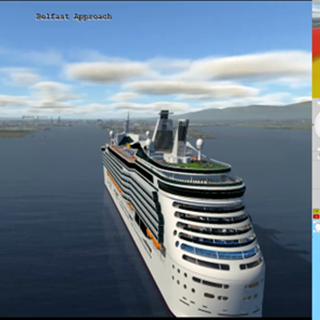
1 October 2024
By Jenny Smith, Senior Sales Account Manager (Submarine) and Alex Walchester, Senior Naval Architect
As global tensions rise and technology evolves at pace, the underwater battlespace is undergoing a profound transformation. In our paper presented at UDT 2025 earlier this year, we explore how submarine operations and undersea warfare are set to change - and what that means for defence stakeholders, policymakers, and technology developers.
Why the undersea domain matters more than ever
The undersea battlespace - once a shadowy theatre of Cold War manoeuvres - is now a critical frontier for geopolitical competition. With over 80% of global trade moving by sea and increasing strategic interest in regions like the Arctic and North Atlantic, securing underwater domains is essential for protecting supply chains, infrastructure, and national interests.
A complex mix of technological, geopolitical, environmental, legal, and social factors is reshaping the underwater battlespace. Technological disruption is at the forefront, with automation, artificial intelligence, battery innovation, and quantum computing redefining what’s possible beneath the waves. At the same time, geopolitical tensions - particularly those involving Russia and China - are prompting NATO and partner nations to rethink their underwater strategies and force structures.
Environmental pressures are also playing a significant role. Climate change is altering operational conditions, especially in the Arctic, while sustainability goals are influencing defence technology choices. Legal frameworks such as UNCLOS, alongside national regulations, are shaping how underwater operations are conducted. Social constraints, including recruitment and crew welfare, are influencing the design and deployment of future assets.
Submarines and other underwater platforms will be expected to fulfil a wide range of strategic roles. Anti-submarine and anti-surface warfare will remain central to deterring adversaries and protecting sea lines of communication. Land attack capabilities, delivered via submarine-launched missiles, will continue to offer covert and flexible strike options. Special forces insertion will require platforms capable of covert delivery in hostile environments, while mine and seabed warfare will demand advanced detection and neutralisation capabilities to maintain freedom of movement.
Intelligence, surveillance, and reconnaissance (ISR) will be vital for maintaining situational awareness and monitoring adversarial activity, particularly in contested regions. Across all these roles, avoiding counter-detection will be a critical transversal challenge, as adversaries deploy increasingly sophisticated sensor networks and unmanned systems.
To meet these evolving demands, future underwater platforms must be designed with a set of core qualities in mind. They must be lethal enough to deliver decisive kinetic effects, and numerous enough to maintain a persistent presence across vast areas. Stealth will be essential to mitigate detection risks, while manipulation capabilities - such as spoofing and jamming - will help deceive adversarial sensors.
Shared awareness will be key to enabling networked decision-making, especially in complex multi-domain operations. Platforms must also be capable of acting independently when communications are degraded or denied. Rapid response capabilities will allow fleeting threats to be engaged effectively, and broad coverage - whether through endurance, speed, or networked operations - will ensure that no part of the battlespace is left unmonitored.
In the next five to ten years, existing platforms and capabilities will continue to dominate. However, maturing technology development programmes will begin to introduce new equipment and capabilities. This period also marks the end of life for many Cold War-era systems, creating capability gaps that novel technologies may help to fill.
Looking further ahead - ten to twenty years into the future - more radical innovations could reshape the undersea battlespace. While evolutionary changes are more common, disruptive technologies driven by clear operational advantages have the potential to redefine how underwater operations are conducted.
The future undersea battlespace demands integrated, cross-domain thinking. While submarines remain central, the domain will be shaped by a constellation of assets, technologies, and strategic decisions. Continued research, wargaming, and collaboration will be key to staying ahead.
Defence leaders must think holistically, integrating platforms, data, and doctrine across domains. Whether you're shaping policy, designing next-gen platforms, or planning future operations, BMT is ready to support the journey. Let’s explore how we can co-create resilient, agile, and future-ready solutions together.

N/A
BMT papers which explore the latest insights on the future of maritime autonomy and the safety of autonomous vessels.

Andrew Gray
One of the most significant pressures on defence programme delivery is that of timescales and iterations: time vs tempo. In this paper, we explore answers to questions around programme viability, how we can adapt our programme models, behaviours and approaches and how to respond to tensions around time vs tempo successfully.

Soma Maroju
Data collection technology and cloud computing advances will continue to build more robust models that help extend the lifespan of assets and shape design improvements.

Phil Thompson
The growing size and number of vessels in the global cruise fleet requires the industry to set new standards for navigation technology to ensure it meet the highest standards of safety.